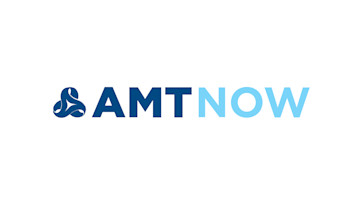Last school year was extremely unsettled again in many states and communities as school administrators, educators, students, and parents managed their way through various states of opening and hybrid and remote learning. The good news is that many secondary and post-secondary CNC and mechatronics program labs were able to be open. This allowed many of the best and brightest students who participate in SkillsUSA programs to compete in state and regional competitions leading up to a completely reimagined SkillsUSA National Championship in CNC, including a first-ever 5-axis CNC demo competition.
SkillsUSA National Championships returned virtually in 2021
SkillsUSA and its industry Career Cluster sponsors support a range of some 100 skilled trades in total, like carpentry, bricklaying, plumbing, electrical and HVAC, culinary arts, automotive and motorcycle mechanics, aviation maintenance, criminal justice, and cosmetology. For our industry, in addition to CNC machining, there are programs and competitions in welding, mechatronics, additive manufacturing, cybersecurity, and robotics and automation technology.
AMT and NIMS are Manufacturing Career Cluster sponsors, and NIMS manages the execution of the CNC machining competitions with the support of equipment and volunteer judges from Autodesk, Carl Zeiss Industrial Metrology, Haas Automation, The L.S. Starrett Company, Mastercam, Oberg Industries, Verisurf, and AMT. The SkillsUSA National Championships were held in mid-June.


Competition background
Designed by NIMS and depending on whether the student competitors were participating in the CNC Milling, CNC Turning, CNC Technician (Milling and Turning), or 5-axis demo competitions, contestants were required to manufacture components for a supplemental human-machine interface (HMI) device holder that supported a range of tablet sizes and could attach to any machine tool. Competitors were given instructions on what was required of them to accomplish, engineering drawings, process diagrams, setup sheets, tool lists, and other resources to complete the task.
Career and technical education (CTE) high school students competed against other high school students. Post-secondary, community college, and technical school students competed against other post-secondary students.
The CNC competition was divided into four main components:
Coding and Programming: A practical exam that assessed a competitor’s skill and knowledge in G-code programming. Competitors programmed tool sequences within a program template and were given a maximum of four hours to complete this component.
CNC Technology Written Exam: A theoretical/written exam that assessed a competitor’s knowledge in CNC technology. Competitors were given a maximum of 90 minutes to complete this component.
Process Control Exam: A theoretical/written exam that assessed a competitor’s knowledge in quality control applications. Competitors were given a maximum of 60 minutes to complete this component.
Employability: A theoretical/written exam that assessed a competitor’s knowledge in quality control applications. Competitors were given a maximum of 60 minutes to complete this component.
One of the judging responsibilities that I enjoy participating in most each year is interviewing competitors for employability and soft skills like communication, adaptability, and teamworking capability. For 2021, we used a combination of Zoom for interviews and Microsoft Teams for inputting judging criteria. That alone, along with doing this entire National Championship virtually, really spoke to the adaptability of each competitor.
Since this was the first year of the 5-axis CNC competition, SkillsUSA rules required a demo competition. Next June, when the SkillsUSA National Championships return to Atlanta, the 5-axis competition will be a National Championship.
Connect with the schools in your community
All the post-secondary competitors that I spoke with were already employed. They typically always are employed by this point in June following the completion of the school year because these are the best and the brightest.
Some of the high school competitors have plans to go on to a post-secondary education, and a few are going to college to become engineers, but some are going straight from graduation to working in a shop.
What’s the best way to attract these students to your company? Connect with the schools in your local area. Join an industry advisory council at a school in your community. Hire students as part of a dual training program, internship program, or apprenticeship. These emerging students are your best path forward to expanding into emerging technologies at your company.






